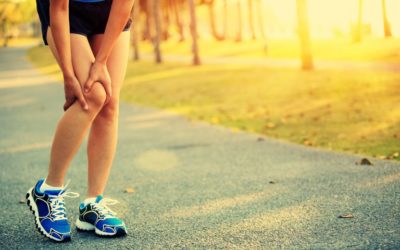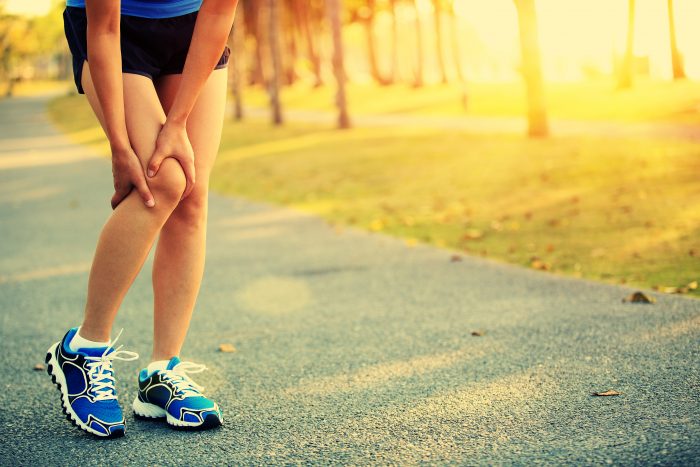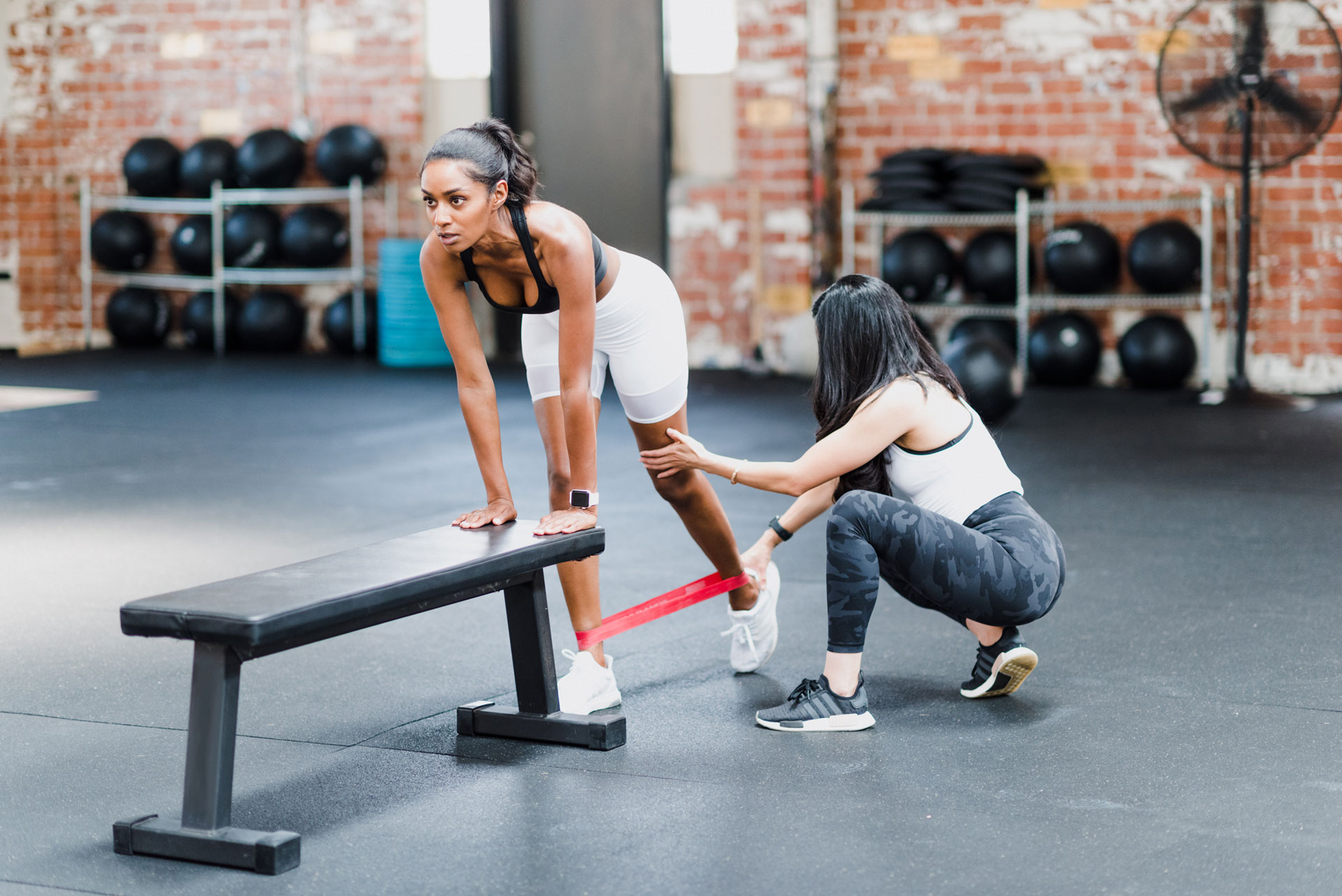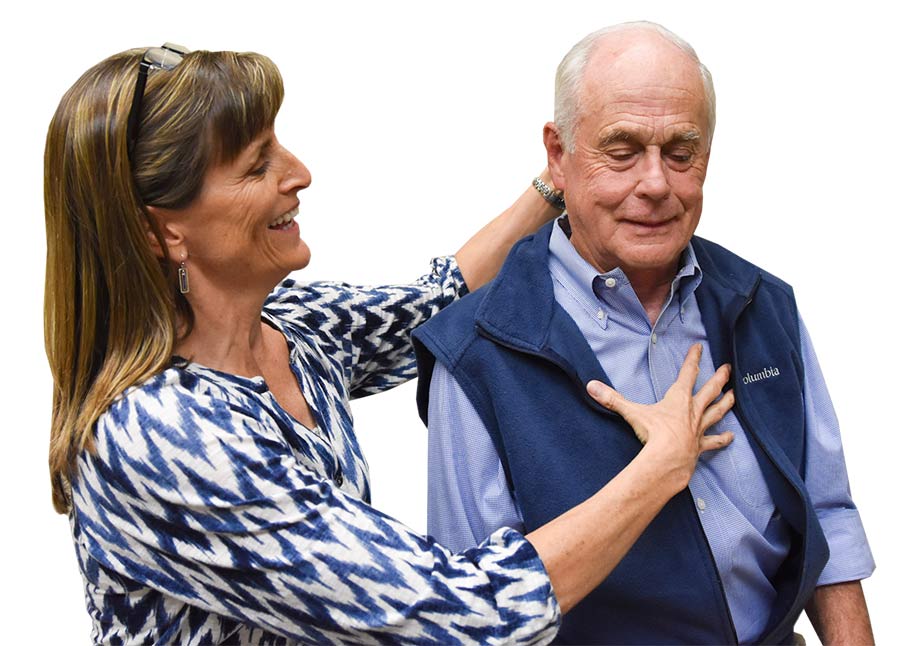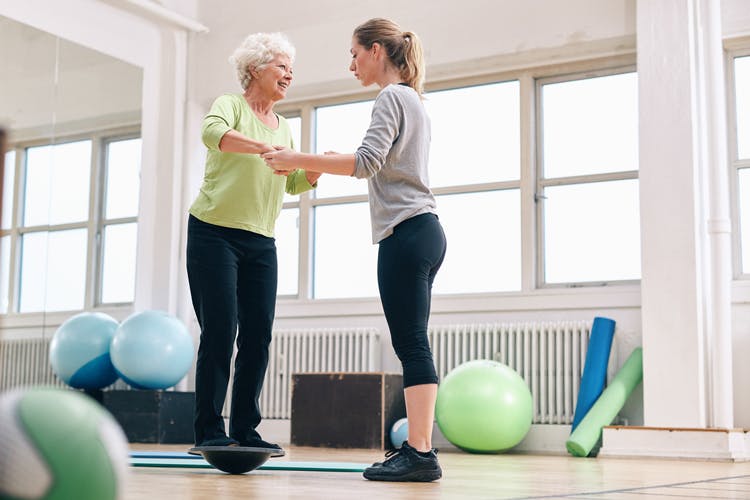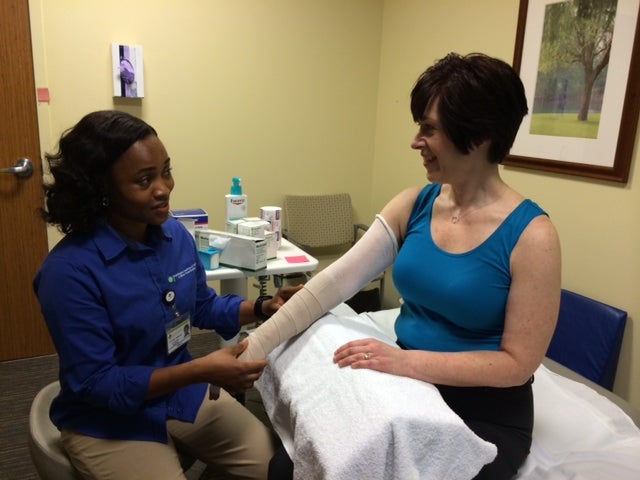
Student-Athlete Injuries
Physical Therapy Treatments for Student Athletes
As a student-athlete, Core Physical Therapy helps you get back to your favorite sport quickly and safely.
Let Core Physical Therapy help treat your athletic injury and get you back on track quickly!
Knee Problems
Patellofemoral Pain Syndrome or Anterior Knee Pain
Patellofemoral pain is defined as pain around or under the patella (kneecap). The kneecap sits in a groove in the thigh bone and slides up and down in the groove as the knee bends and straightens. If there is a muscle imbalance or structural fault, there may be improper gliding resulting in pain. The problem may be at the knee but is more often at the hip or ankle. Patellofemoral pain is common in runners, bikers, soccer players, and gymnasts and is more prevalent in females. Complaints include pain when walking up or down hills and stairs, squatting, running, jumping, or prolonged sitting.
Treatments for Knee Pain
Treatment includes strengthening the weak muscles found during the exam. It is common to find butt (gluteal) and quad weakness in those with patellofemoral pain. Kinesiotaping, McConnell taping, or bracing may reduce pain while working to improve strength. Changing shoe wear and/or using over the counter orthotics may lessen pain. Faulty running mechanics may be the cause of the pain and a videotape running analysis will allow the therapist to recommend appropriate changes.
ACL Tears
The ACL (anterior cruciate ligament) is an important stabilizer of the knee. ACL injuries occur during contact or non-contact activities when the knee abruptly caves in or hyperextends. Initial symptoms include knee pain, swelling, instability, and difficulty walking. There may be an audible pop at the time of the injury.
Most athletes opt for surgery to reconstruct their ACL although a small number may be able to return to their sport without reconstruction. Athletes prone to ACL injuries play sports that involve cutting such as football, basketball, and soccer and jumping activities such as volleyball and gymnastics.
The surgeon will use part of the athlete’s patellar or hamstring tendon or a cadaver tendon to reconstruct the ACL. This is often surgeon preference but will depend on the tear and age of the athlete. The surgery will be an out-patient procedure and the athlete will return home the same day with a knee brace and crutches.
Treatment for ACL Tears
Treatment after an ACL reconstruction will begin several days after surgery. The initial focus will be to restore knee mobility and quad strength beginning with quad sets (tightening the front of the thigh) and progressing to leg lifts. Neuromuscular electrical stimulation may assist quad contraction.
Soft tissue and joint mobilization may be added to improve mobility. A stationary bike is used early in rehab to improve mobility and strength. The brace will be unlocked when the athlete is able to control the knee. By 4-6 weeks, the brace is no longer necessary. Strengthening and balance exercises will be progressed and the range of motion will be continued until full motion is restored.
Jogging may begin around 3 months depending on the athlete’s progress followed by controlled jumping and hopping. Cutting, agility, plyometrics, acceleration, and deceleration exercises will be implemented from 3-6 months as strength improves.
Full return to sport may be possible by 9-12 months if able to pass all functional tests in therapy including running, sprinting, double and single leg hops, cutting, and squats.
Meniscal Tears
The meniscus is a small cartilage pad between the femur (thigh bone) and tibia (shin bone) that distributes body weight and absorbs shock. Each knee has two menisci. Traumatic meniscal tears commonly occur with a forceful twisting or rotation when weight-bearing. There may be pain and swelling and some tears may cause a “block” in knee mobility. Depending on the type, location, and severity of the tear, surgery may or may not be indicated.
Treatment for a non-surgical meniscal tear includes strengthening and mobility exercises, joint mobilization, modalities to reduce pain and swelling, and an exercise program. The recovery time varies depending on the location of the tear, age of the athlete, and the sport they play.
An arthroscopic meniscectomy is an outpatient procedure where the torn piece of meniscus is removed and the joint cleaned. Therapy often begins 1-2 days following surgery. Crutches may be used for several days but weight-bearing should start immediately. The focus of therapy will be regaining knee range of motion and strength. Manual work such as soft tissue and joint mobilization may be necessary to restore mobility. Rehab will include strengthening, agility, cutting, plyometrics, and sport-specific exercises. Recovery is typically quick and the athlete often returns to their sport as early as 1-2 months after surgery.
Treatment for Meniscal Repairs
Treatment for a meniscal repair is much more involved than a meniscectomy. This arthroscopic surgical procedure involves stitching the torn part of the meniscus. The athlete will go home the same day with crutches and a locked brace keeping the knee straight. Often, they will be non-weight bearing for 4-6 weeks while the repair heals. Therapy will start early with a focus on slowly gaining knee mobility and strength. Jogging may be implemented between 3-4 months followed by a slow return to agility and sport-specific exercises. Return to full activity may take 9-12 months.
Iliotibial Band Syndrome (ITB Syndrome)
The IT band is an inelastic fibrous band that connects the outside of the hip to the outside of the knee and helps stabilize the knee. ITB syndrome occurs when the band rubs against a bony prominence repetitively. This can cause pain and tenderness to the outside of the thigh just above the knee. Runners and bikers are the most common athletes affected by ITB syndrome.
Treatments for Iliotibial Syndrome
Treatment will depend on the deficits found during the exam. Glute weakness is a common finding but for a runner, mechanical faults may also be a cause. A poor bike fit may be the culprit in bikers. Treatment may include hip strengthening, change in shoe wear, over the counter orthotics, change in running or biking mechanics, or altering bike fit.
Patellar Tendinitis
The patellar tendon attaches the quadriceps muscle (front of the thigh) to the top of the shin bone (tibia). Also known as “jumper’s knee”, patellar tendinitis most commonly occurs to athletes that frequently jump such as basketball players, gymnasts, jumpers (track), and volleyball players. Complaints include pain and tenderness to the front of the knee below the knee cap that worsens with jumping, squatting, running, and stairs.
Treatment for Patellar Tendinitis
Treatment for patellar tendinitis depends on how long it has been a problem. In the early stages, the tendon will be inflamed and treatment will include rest, modalities, taping, pain-free exercises, and ice to reduce the inflammation. As the tendinitis progresses, small tears and scarring will occur to the tendon so loading the tendon is the key to recovery. Treating chronic tendinitis (known as tendinosis) will take a longer time to recover as the loading exercises work to change the construction of the tendon. Performing the home exercise loading program may need to be performed for 6-12 months.
Why Choose Core Physical Therapy to Treat Student Athletes?
Our therapists have been involved in high school and college athletics and understand the importance of returning to sport, whether competitive or recreational. Brenda participated in volleyball, basketball, softball, and track throughout high school and played Division I basketball at Penn State. She also played beach and grass doubles volleyball competitively after college. Morgan was on the swim and track team in high school and the Virginia Tech Triathlon Club. She has a strong passion for running and completed an ultramarathon in 2020. At Core Physical Therapy, we intentionally see a low volume of patients to better understand your wants and needs and to develop the best program for your safe return to the sports you love.
Shoulder Problems
Rotator Cuff Injuries
The rotator cuff is made up of four muscles that cover the front and back of the scapula (shoulder blade). The rotator cuff tendons attach to the ball of the humerus (upper arm). Their function is to keep the ball stable in the socket when moving the arm. Rotator cuff injuries such as tendinitis, tears, or strains may occur due to trauma, overuse, or without cause. Athlete’s often experience rotator cuff problems due to repetitive motions and is common with tennis and volleyball players as well as swimmers, baseball, and softball players. Symptoms may include pain when elevating the arm overhead, throwing, sleeping on the affected shoulder, and reaching across or behind the body. Weakness and pain with testing are often evident in the exam.
Treatment for Rotator Cuff Injuries
Non-surgical treatment for a rotator cuff injury may include strengthening and mobility exercises, soft tissue mobilization, dry needling, joint mobilization, KT taping, and modalities for pain reduction. As strength improves, more sport-specific exercises will be given in order to allow the athlete to return to full participation. Changes in throwing mechanics may be necessary.
It is uncommon for a young athlete to need a rotator cuff repair but if non-surgical care fails, arthroscopic decompression surgery may be indicated. The goal of surgery is to clean out the joint, remove any bone spurs, and give the shoulder more space to prevent any impingement when using the arm. It is an outpatient procedure and a sling will be worn if needed. Therapy will begin several days after surgery with the initial focus on swelling and pain control and progressing to improving mobility and strength. Sport-specific exercises will be implemented as the athlete progresses in therapy to ensure they can return to their sport.
Shoulder Instability
Since the shoulder joint is inherently highly moveable, excessive range of motion can increase the risk of shoulder dislocations (ball completely slips out of the socket) or subluxations (ball partially slips out of the socket). This can be caused by direct trauma or repetitive motions. Symptoms include complaints of instability and pain with overhead activities. This is most common in overhead athletes such as volleyball, tennis, softball, and baseball players as well as gymnasts and swimmers.
Treatment for Shoulder Instability
Treatment will focus on strengthening and stability exercises for the shoulder. It is important to improve the rotator cuff strength as well as muscles around the shoulder blade (scapula). Avoiding motions that may be more provocative and increase the risk of dislocation should initially be avoided. Manual work and modalities will help reduce pain and swelling. Sport-specific exercises will gradually be introduced safely. Understand that shoulder instability is not curable conservatively, however, many athletes may not need surgery depending on their sport.
Labral Tear
The labrum is a fibrous ring around the rim of the shoulder socket that deepens the socket and adds to the stability of the shoulder. Injuries to the labrum can occur from trauma, excessive joint mobility, or repetitive shoulder motions. This injury is more commonly found in overhead or throwing athletes. Symptoms include a feeling of instability in the shoulder when raising the arm overhead or throwing, pain with overhead activities, loss of strength, and possibly catching, locking, or popping.
Treatment for Labral Tears
Non-surgical treatment for a labral tear is treated similarly to those with shoulder instability. The immediate focus will be on pain control with a progression to stabilization, strength, and mobility exercises as tolerated.
If conservative care fails and the pain and instability persist, surgical repair of the labrum may be an option. The torn labrum is arthroscopically repaired and the athlete will return home the same day. A sling will be worn for 4-6 weeks with no active motion to allow for healing.
Therapy will begin early with a passive range of motion and modalities for pain control. The range of motion will be increased gradually with specific limitations while healing.
Gradually, an active range of motion will be introduced followed by gentle strengthening progressing to more aggressive strengthening and sport-specific activities. An overhead athlete is likely to return to action 9-12 months following surgery.
Please note this may vary widely depending on the surgeon and what was performed surgically.
Core Physical therapy was exceptionally thorough and accommodating when our son needed prompt attention. Morgan was amazing and went above and beyond to ensure an accurate diagnosis. Brenda Miller is caring and knowledgeable and helped our son understand not only what to do, but why it needed to be done to ensure a complete recovery. The facility is beautiful and the follow up care by both professionals was second to none! I highly recommend Core Physical Therapy.
Elbow Problems
Tennis Elbow (Lateral Epicondylitis)
Tennis elbow is an inflammation of the muscles and tendons on the top of the forearm that connects to the outside of the elbow (lateral epicondyle). Although called tennis elbow, it occurs to tennis as well as non-tennis players and is due to repetitive gripping activities. The pain is located to the outside of the elbow and increases with activities that require gripping.
Treatments for Tennis Elbow
Treatment includes manual work to the muscles of the elbow including soft tissue massage, dry needling, or tooling to improve blood flow. Strengthening and flexibility exercises will be implemented and a loading program may be needed to allow for healing for more chronic tennis elbow. For tennis players, the weight, grip size, and stiffness of the racket may need to be modified to manage pain.
Golfer’s Elbow (Medial Epicondylitis)
The muscles on the underside of the forearm attach to the inside of the elbow (medial epicondyle). Inflammation of these tendons can cause pain and tenderness. It is maybe due to overuse (gripping) or without cause. This is less common than tennis elbow but may occur to golfer’s or after a shoulder injury when overusing the elbow. Addressing strength deficits and flexibility restrictions at the wrist, elbow, and shoulder can help improve this condition.
Treatment for Golfer’s Elbow
Treatment includes manual work to the elbow to reduce pain, improve blood flow, and allow for healing. Strengthening and flexibility exercises will be implemented including a loading program to promote tendon healing.
Hip Problems
Hip Flexor Tendinitis (Iliopsoas Tendinitis)
The hip flexor muscles are located on the front of the hip and inside the pelvic bone. Flexing the hip (such as when marching) repeatedly can cause inflammation to the tendons. Athletes predisposed to hip flexor tendinitis include ballet dancers, cyclists, rowers, track and field participants, soccer players, and gymnasts.
Treatment for Hip Flexor Tendinitis
Treatment for hip flexor tendinitis will include strengthening the weak muscles found on the exam, working on the tendon manually as needed, loading the tendon to improve healing as appropriate, and progressing strengthening exercises so the athlete is able to return to their sport.
Gluteus Medius Tendinopathy
The gluteus medius muscle is located on the outside of the hip. This muscle keeps the pelvis level while walking and standing on one leg. With gluteus medius tendinitis, there is pain and tenderness over the lateral part of the hip. At times, this pain may radiate down the outside of the thigh. This problem is most commonly found in runners although often occurs without cause. Findings include pain with stairs, running, lying on the affected side, prolonged sitting, and sitting with legs crossed.
Treatment for Gluteus Medius Tendinopathy
Treatment choices will depend on when the pain began. If early, then rest, ice, pain-free exercises, and anti-inflammatories may abolish the problem. If the pain has persisted longer than a month, treatment will include strengthening the weak hip musculature, manual work such as deep friction or soft tissue mobilization, joint mobilization, dry needling, improving shoe wear, and modifying activity level temporarily. For runners, checking running mechanics and modifying their training program is vital.
Hip Impingement/Labral Tears
The hip socket has a fibrous ring that lines the outer rim of the socket called the labrum. The labrum provides a tight seal and adds stability to the hip joint. Hip impingement (medically known as femoroacetabular impingement) is a pinching that occurs to the hip often due to an abnormality to the ball or socket of the hip joint. Often, the labrum can be damaged when friction or pinching occurs. Excessive hip mobility, weak hip musculature, and hip tightness to the back of the hip may predispose an athlete to hip impingement. Pain and sometimes catching or popping are felt in the groin and possibly buttocks and can be exacerbated during sporting activities, especially those requiring twisting, turning, squatting, pivoting, and climbing.
Treatment for Hip Impingement or Labral Tears
Non-surgical treatment for hip impingement includes strengthening exercises of the weak hip muscles, joint mobilization and stretches to improve joint mobility to the back of the hip, soft tissue work if needed, and activity modification.
If conservative care does not allow for adequate recovery, surgical intervention is an option. An arthroscopic repair of the labrum may be performed as well as surgical management of any bony deformities.
The athlete will return home the same day wearing a hip spica brace using crutches. It is important to avoid or minimize weight-bearing in order to prevent re-tearing of the labrum.
Therapy will begin within a week from surgery with a focus on education, manual work, and modalities to lessen pain, gaining hip mobility safely and improving lower extremity strength. A stationary bike will be started within the first 1-2 weeks of therapy.
By 4-6 weeks, weight-bearing will be gradually introduced and weight-bearing exercises will be added to the exercise program. Emphasizing glute strength and restoring hip joint mobility is extremely important. Manual work may be needed to lessen muscle tension.
Return to the sport may vary widely from 4-8 months and will depend on successfully completing the functional testing exam. These time frames may vary widely depending on the surgeon.
Back Pain
Lower Back Pain
Athletes may experience lower back pain from a fall, jarring movement, repetitive activity, or without cause. Many structures may be involved including muscles, joints, nerves, and disks however, it is very difficult and often not necessary to identify the exact structure as they all work together. Symptoms of lower back pain may be an ache or sharp pain to the lower back centrally or off to one side. There may or may not be pain that radiates into the buttocks, groin, or leg. Numbness or tingling may be present if there is nerve irritation.
Treatments for Lower Back Pain
A physical therapy exam will shed light on the best way to treat the athlete. Oftentimes, there is a directional preference that will ease the pain such as extension (arching back) or flexion (bending back). If the injury is fairly recent, joint mobilization or manipulation may be effective.
Flexibility, hip, and core strengthening exercises are often indicated. Modalities may be helpful if the pain is acute and the athlete is highly irritable. As the pain lessens, the athlete will begin sport-specific exercises.
Meet The Core Physical Therapy Team

Brenda Miller PT, MPT, OCS, CLT, CMTPT
Owner & Physical Therapist
Brenda Miller is the founder and owner of Core Physical Therapy. She earned her Bachelor of Science degree in Exercise Science from Pennsylvania State University, then completed her master's degree in Physical Therapy from Arcadia University in Glenside Pennsylvania.
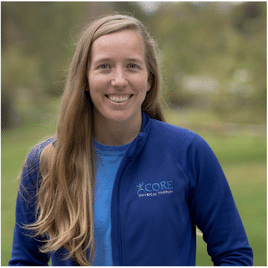
Morgan Chocklett PT, DPT
Physical Therapist
Morgan Chocklett earned her Bachelor of Science Degree in Exercise and Health Promotion from Virginia Tech (GO HOKIES!!) and her Doctorate of Physical Therapy from Mary Baldwin University. She is thrilled to be back in Blacksburg and flaunt her maroon and orange!
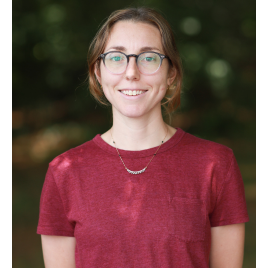
Kate Buss, DPT
Physical Therapist
Kate Buss earned her Bachelor of Science Degree in Human Nutrition, Foods, and Exercise from Virginia Tech and her Doctorate of Physical Therapy from Virginia Commonwealth University.

Maria "Peti" Tibung, PT, DPT
Physical Therapist
Maria “Peti” Tibung earned her Bachelor of Science Degree in Physical Therapy from the University of the Philippines and her Doctorate of Physical Therapy from Shenandoah University.
Articles Related to Student-Athlete Injuries
Do You Experience Knee Pain When You Run?
DO YOU EXPERIENCE KNEE PAIN OR SNAPPING TO THE OUTSIDE OF YOUR KNEE WHEN YOU RUN? IS RUNNING DOWNHILL PAINFUL? If you answered yes to any of these questions, one potential problem may be iliotibial band syndrome....
Core Physical Therapy Specializes In
Running Injuries
Running injuries are common whether you are a novice or competitive runner. Training errors, inappropriate footwear, mechanical faults, weakness or flexibility may be the issue. At Core Physical Therapy, we provide a comprehensive evaluation that addresses posture, strength, shoe wear, flexibility and range of motion. Your running will be videotaped and analyzed for mechanical faults. Following the exam, you will learn about potential causes for your pain and how to treat it with exercises, changes in shoe wear or specific suggestions on how to improve your running mechanics
CrossFit Injuries
CrossFit has become extremely popular over the past twenty years. The program emphasizes cardiovascular endurance, stamina, strength, flexibility, power, speed, agility, and balance. Occasionally, Crossfit athletes suffer an injury due to training errors or improper technique. The physical therapists at Core are trained to assist CrossFit athletes by improving their technique or any deficits they may exhibit with strength, flexibility, or joint mobility. Videotape analysis may be used to break down movement patterns to better assist with improving technique.
Student Athletes
Core Physical Therapy works with many student-athletes from Virginia Tech and the local elementary, middle, and high schools who injure themselves while participating in their sport. The athletic background of the physical therapists gives them a better understanding of what is required to return to competitive athletics. We treat overhead athletes such as volleyball, tennis, baseball, and softball players as well as gymnasts, runners, swimmers, bikers, and soccer players among others. Common injuries involve the shoulder, back, knee, and ankle. We try our best to accommodate the student-athletes schedule by offering early morning and late treatment hours.
Post Surgery Rehabilitation
If conservative management is unsuccessful in relieving pain and disability, surgery may be an option. The quality of physical therapy following surgery will greatly impact recovery. At Core Physical Therapy, we take your recovery very seriously. We make it a point to understand what was done surgically and will communicate with the surgeon as needed. Common surgeries seen at Core include but are not limited to ACL reconstructions, meniscectomies, spinal fusions, discectomies, carpal tunnel repairs, labral repairs, rotator cuff repairs and joint replacements to the shoulder, knee, and hip.
Dizziness | Vertigo | Balance Difficulties
The prevalence of falls increases with age. Vision, strength, sensation, and the inner ear (vestibular system) work together to maintain balance and equilibrium. If any of these systems are not functioning optimally, dizziness, and poor balance may result in increasing the risk of falls and severely impacting the quality of life. At Core Physical Therapy, an evaluation will be performed to determine the cause of the imbalance or dizziness. Treatment will be implemented to address the deficits to restore balance and resolve the dizziness.
Breast Cancer And Lymphedema
The number of cancer survivors continues to increase in the USA due to better treatment. Breast cancer is one of the most common cancers among women. Cancer and the treatment for cancer may lead to problems such as scar tissue and mobility restrictions, weakness, cancer-related fatigue syndrome, cording (axillary web syndrome), and lymphedema (post-cancer edema). At Core Physical Therapy, we have a certified lymphedema specialist who is able to address these issues with lymphatic manual drainage, bandaging, exercises, manual work, stretching, and cardiovascular conditioning.
Helpful Links

922 University Blvd, Suite 204
(Behind Macado's Restaurant)
Blacksburg VA 24060
Copyright © 2023 Core Physical Therapy
Website design & development by
Carbon Six Digital Marketing Agency
